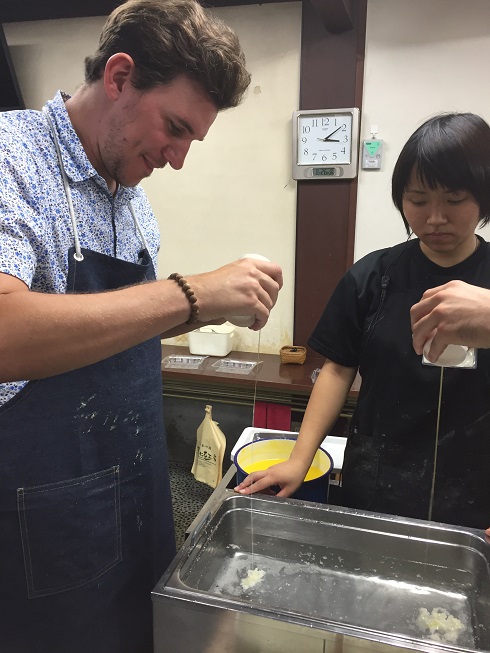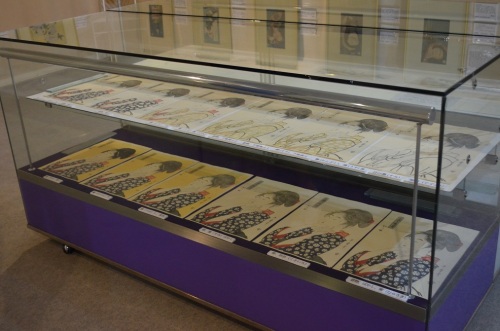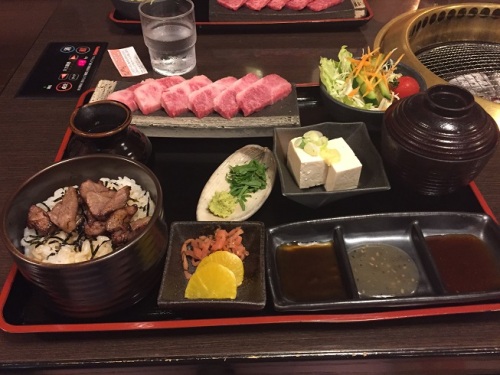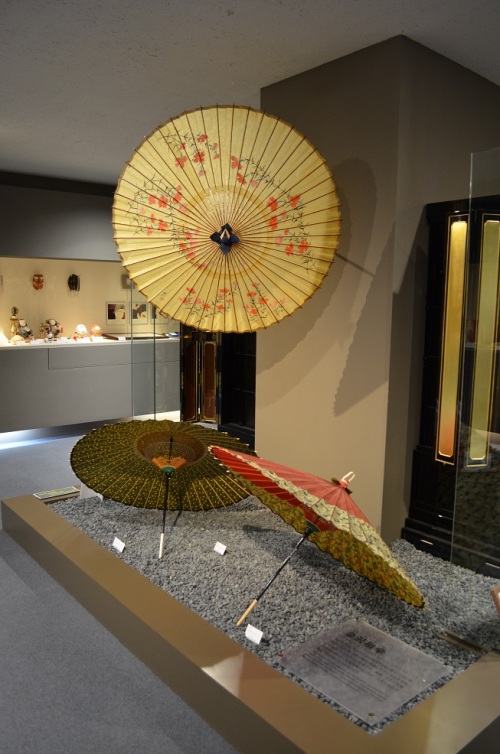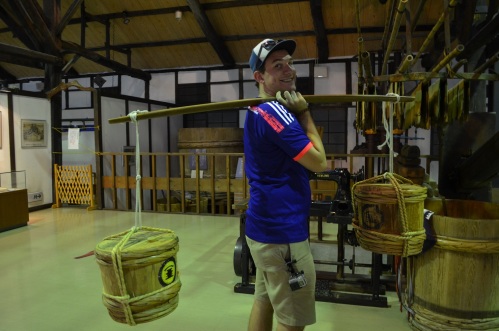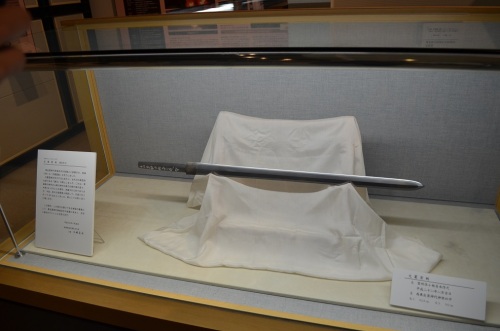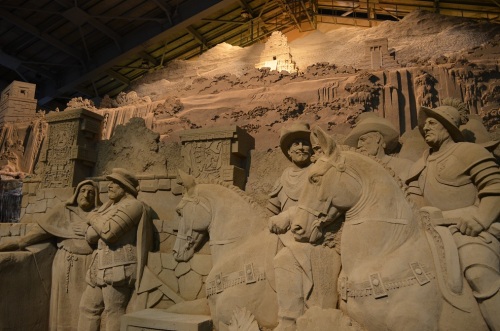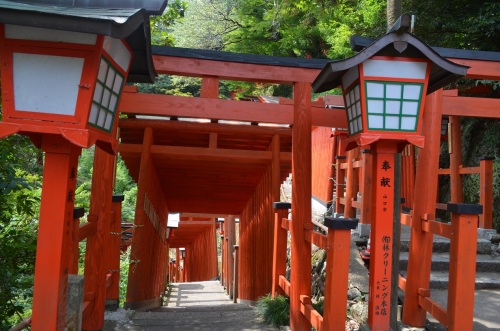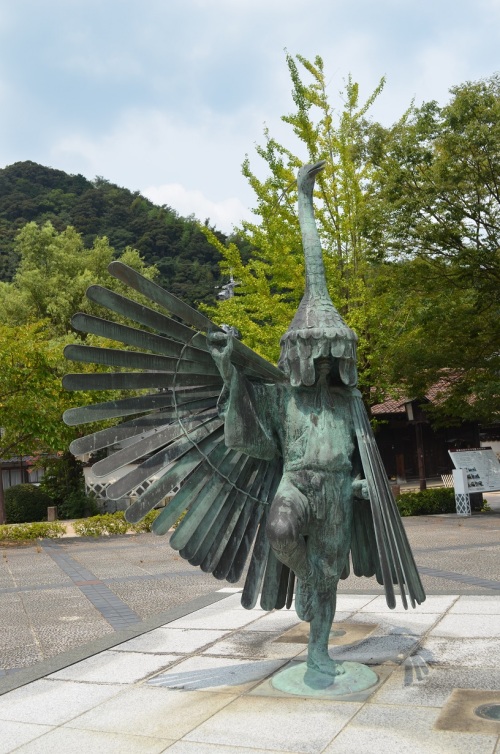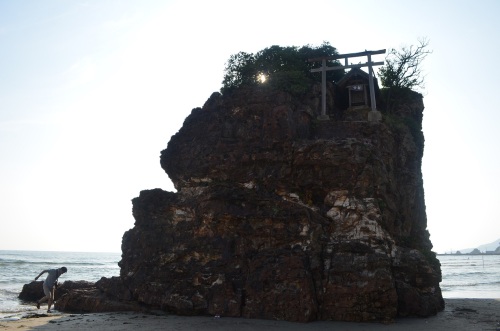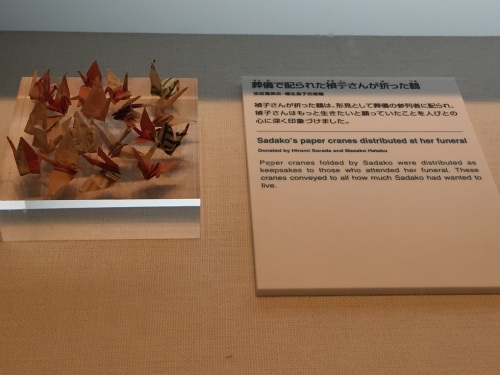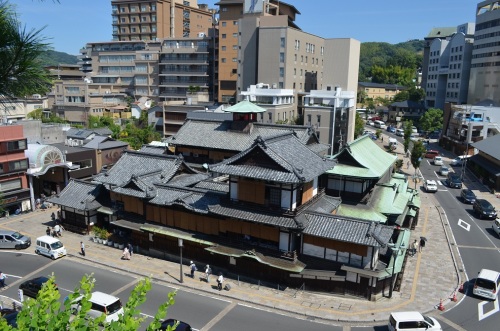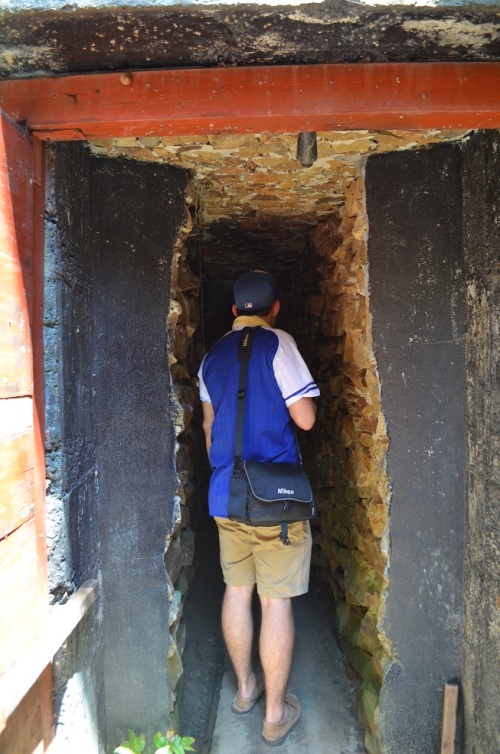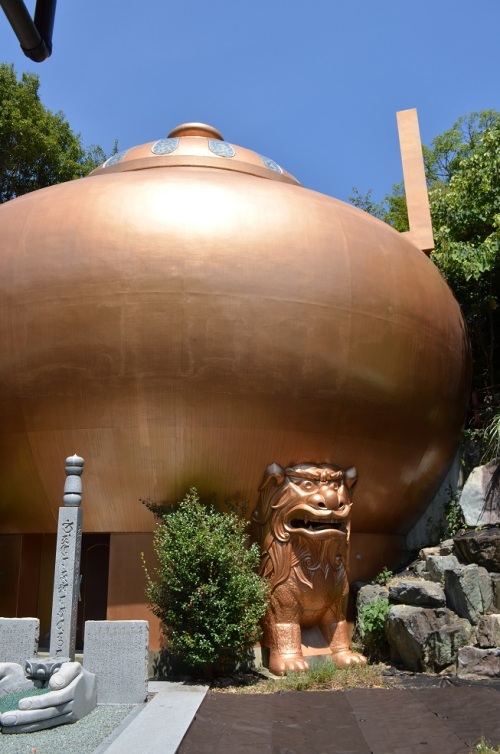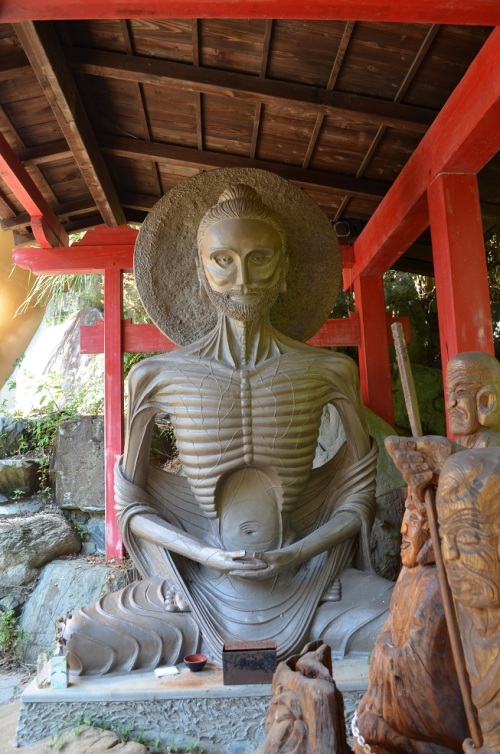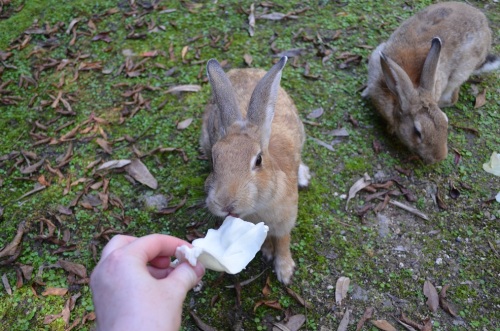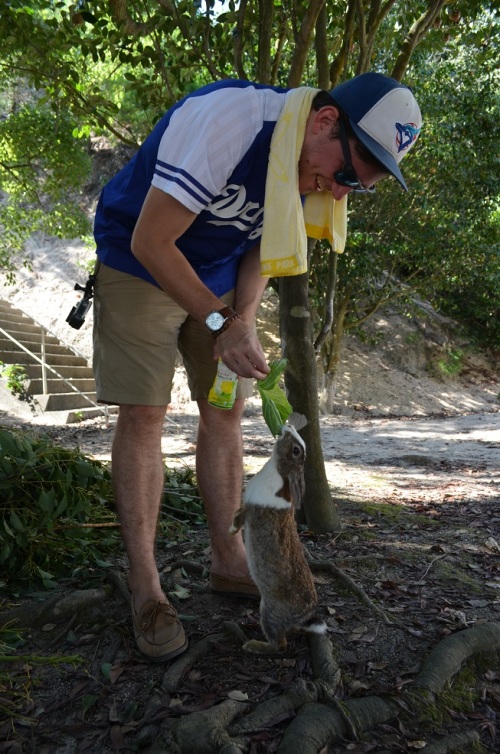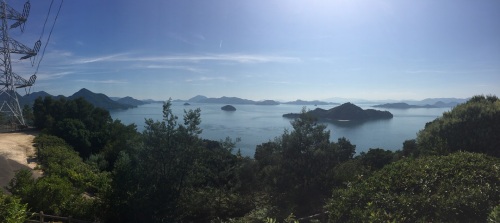The last day of our three week Japan roadtrip had arrived and we were amazed by how quickly it had gone…and also how much we had managed to fit in it! We had a very full last day though starting with a quick breakfast at the hostel. Then came the challenge of repacking the car! We were meeting Mark and Missy half way through the day and driving them back to Nagoya so we needed some room for two more people in the little rental.
Reorganized and ready for the day we drove the very short distance to the main parking lot of Ogimachi, the largest village (and most accessible) of Shirakawago. There is a main info building/gift shop beside the parking lot where we got a map of the houses. Right across from the info centre was an open air museum where they had transported a number of houses from the surrounding villages to preserve and showcase them. We decided to do the museum first and see the different types of buildings and learn more about the style. The buildings are made in the gassho-zukuri style, said to resemble hands together in prayer. The buildings were made of wood and thatched roofs, without the use of nails. The steep roofs allowed for protection from sun in summer and snow in winter. A number of them were open to see inside as well. The buildings were simple in design but had a surprising amount of space considering the size of more modern Japanese houses! The main area had a fire built into the floor with pots hanging from the ceiling over it for cooking. They also had traditional shoes, clothing, and even saddles on display made from straw the same as the roofs. Since we were surrounded by mountains with no large roads nearby it was very easy to imagine a farming lifestyle 300 years ago.
Between the info centre, museum, and the actual town was a large river and also a large pedestrian suspension bridge. No cars are allowed in town to help preserve it, especially with more and more tourists coming every year to see it. Most of the houses in the village are still people’s homes so it was a little funny seeing such traditional houses with laundry hanging outside or modern day gardening equipment leaning against the walls. Although we weren’t there in winter, going in summer does provide nice views of the green rice fields and koi filled streams between the houses.
One of the best preserved houses, Kanda-ke, is open to the public and we bought tickets to go inside. Much like the museum house they had a fire pit on the main floor, the smoke wafts up through the house keeping the roofs clear of insects. The design of the houses and the steep roofs provide room for multiple floors in the houses. The stairs were narrow and steep but we made our way up to see samples of tools and everyday items from hundreds of years ago. Sericulture, or silk worm farming was a popular industry and the upper levels of the farmhouses provided space for storing all the tools, silkworms, and mulberry leaves. The windows on the upper levels also gave excellent views of the nearby houses and rice fields. The gardens were in bloom and the surrounding forested mountains made it feel like a postcard. It was very impressive to see how the houses were built and how much work went into them. The roofs are rethatched every 20-30 years and it is a community effort – pictures showing dozens of men on bamboo ladders doing the work was impressive!
We strolled back through the village and across the river to our car. It was now on to Gujo Hachiman another small city in Gifu and the last major stop on our road trip. We drove straight to the train station, about an hour and 15 minute drive, and picked up Mark and Missy there who had taken the train from Nagoya. We found a convenient spot to park on a side street and headed out looking for lunch. Gujo wasn’t the most convenient place to find some food for people who don’t speak English but we made our way past lots of small shops and found the large Yoshida River that runs through town. A number of bridges cross the river and provide great views of the buildings lining the banks and events in the river themselves. The waterways of Gujo are a huge source of pride – they are exceptionally clean and many of their local events and cultural identities are linked to the water. From trout fishing, to the right of passage of jumping off the bridges into the water, to the yearly event of rinsing/fixing the dyes of the locally made wind socks, many things revolve around the rivers. There was a small restaurant beside the river so we ordered some food and watched some fly fishermen while we waited. We had a mismatched lunch of paninis, fries, croquettes, and kakigori before determining we were full.
We found our way to Sample Kobo, a food replica store and workshop a block or two away. Food replicas are said to have started in Gujo and are still produced primarily there. It is said upwards of 70% come from the town which is amazing considering just how much is produced. Virtually every restaurant in Japan has the fake food in display cases at the front of their stores. From a tourist standpoint it is incredibly helpful to get a visual of the food when you can’t read the menu! At a number of restaurants we had been impressed by how realistic the food actually looked and the things they were able to accomplish with wax. Entering the store was even more amazing as the walls and tables were lined with examples. Vegetables, meat, pasta, sushi, bowls of ramen, ice cream, and every drink imaginable. They even do ones that look spilled – drinks toppled over, bowls of ramen dumped on the table, or ice cream melting off the cone. We spent a long time in the gift shop picking out souvenirs (most things were available in magnet or keychain form!) our haul included magnets for everyone ranging from edamame, and half a clementine, to chocolate, and a piece of cooked salmon!
We signed up for the workshop and put on some aprons. The worker let us each pick out three pieces of premade items to then tempura – shrimp, pumpkin, shiso leaf, and peppers were what we ended up picking. She did a quick demonstration of the technique then let all of us have a turn. After dripping the hot wax into the water you press the item into it and press it around gently, flip it over and it looks like a tempura piece! Let it cool quickly in some cold water and it’s good to go! Next up was the lettuce, we had actually seen a video of this online years ago so being there and being able to do it was really cool. They pour green wax into the water along the top and a little white at the end and pull it through the water to make a big sheet. Then by rolling loosely in your hand it creates the shape of the lettuce by the end. We had a lot of fun doing the workshop and you end up with some pretty unique souvenirs by the end of it.
With all our fake food packed up we strolled back through town towards the car. We stopped in a couple shops along the way, stores selling geta and tea. Since it was still a little early in the day we drove to another nearby attraction, Otaki Cave. After buying the tickets, and waiting for the boys to catch some pokemon (Pokemon Go was a huge theme on our last roadtrip), we headed to the cablecar which would take us up to the entrance of the cave. The limestone cave is about 2 km long and weaves around through narrow passages and steep stairways. Like many of the caves we had been in there were sporadic larger openings with significant sites or stone carvings, and at one point a 30m tall waterfall – the tallest underground waterfall in Japan. The cave eventually spits you out still up in the forested hillside so we walked back down to the main entrance area.
There are a number of little stores there which we browsed through before going to check out a pond to the one side. They had plenty of fish swimming around and Missy was able to strike up a conversation with the man minding it. We decided to opt into the fishing and were each given little fishing rods with some flimsy string and a chunk of fish bait was plopped into Chris’ hand. As much as we tried the fish were very much not into our food. A further problem we realized was the walls to the pond were quite high, so when we did catch anything getting them up to a bucket without breaking the line was a feat. After much cooperation I was able to catch one and as a group got it onto land. Since the little grills for cooking weren’t open at that time and we weren’t much interested in eating it anyways we promptly let it back free.
We all packed into the car and headed toward Nagoya, now only about an hour drive. We decided to stop at a McDonalds on our way home for some dinner, where Chris and I were amazed to see a play place outside! Mark and Missy were then amazed that in Canada they are inside because of those pesky cold winters. We made it back to our apartment and Mark and Missy were awesome enough to help us carry our stuff inside before Chris returned the rental car. We had a nice evening of visiting and unpacking some of our souvenirs to show them before we packed them all back up again in preparation for our flight! It was a little weird to be back in Nagoya and done our three week long roadtrip – if you’ve read this far I’m sure you know how much we were able to fit into those three weeks and it provided some amazing final adventures in the Land of the Rising Sun!







